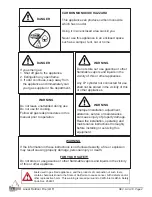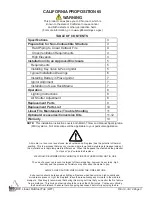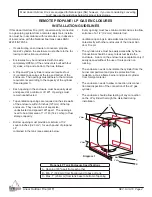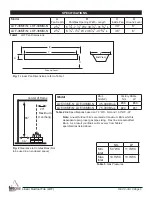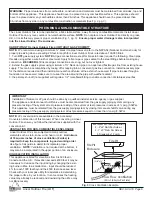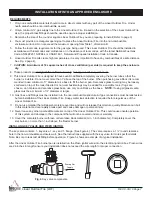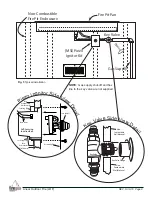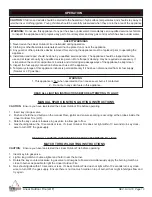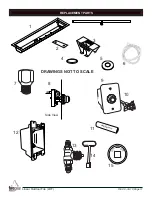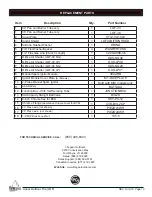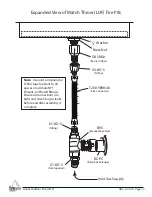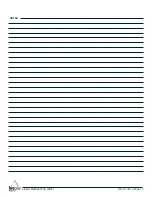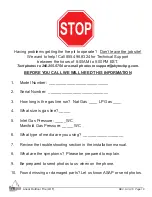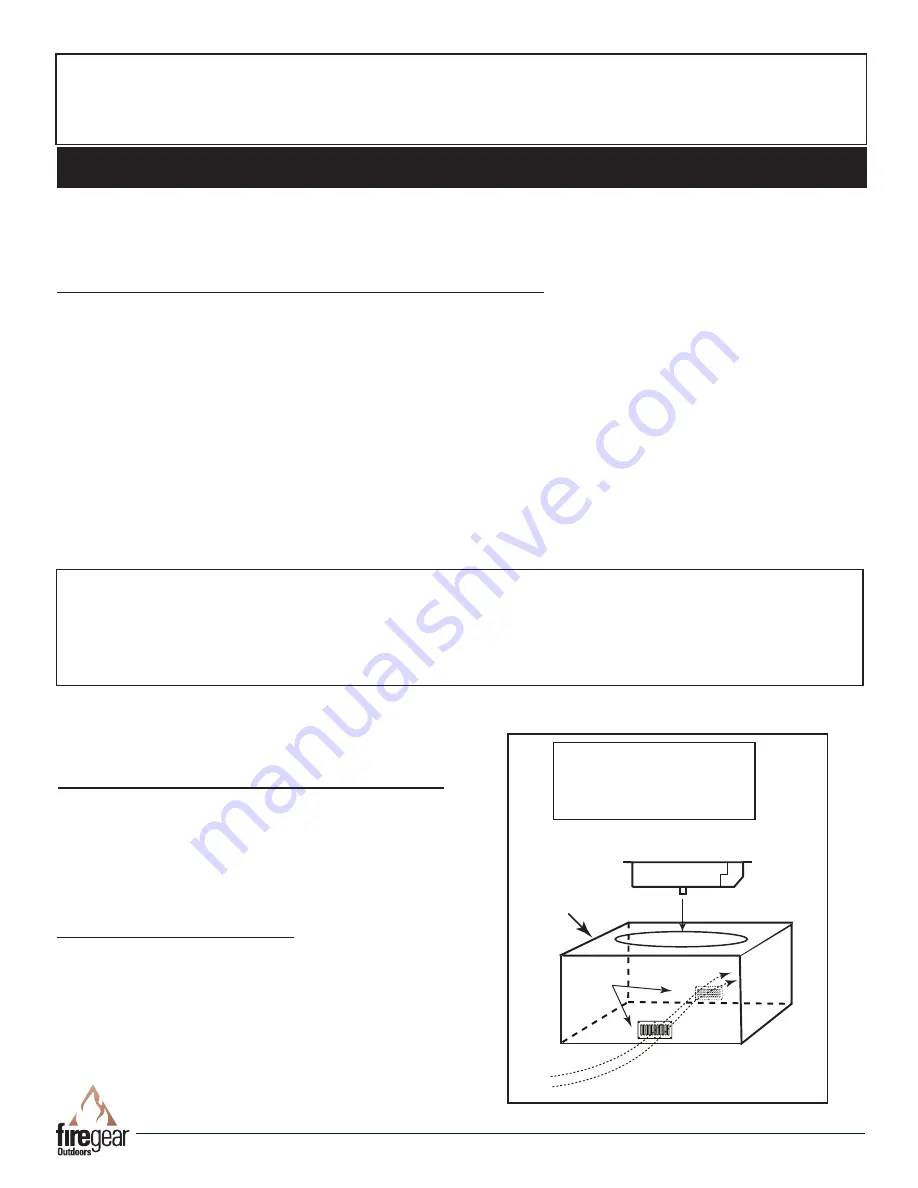
REV. 8-30-18 Page 6
Linear Outdoor Fire (LOF)
WARNING:
Proper clearances from combustible, construction and materials must be maintained from all sides, top and
bottom of this appliance. This appliance should never be placed on any combustible surface. This appliance should
never be placed under any combustibles closer then 96-inches. This appliance should never be placed closer than
36-inches from any side to any combustible construction or materials (See fig. 2, pg. 3).
PREPARING A NON-COMBUSTIBLE STRUCTURE
The Linear Outdoor Fire is to be installed on a flat, stable surface, away from any combustible materials. Install Linear
Outdoor Fire on any level, outdoor non-combustible surface.
NOTE
: Do not place Linear Outdoor Fire directly on grass,
dirt, or rocks this may prevent proper ventilation (Fig. 1, pg. 3).
Ensure proper water drainage is also incorporated
into the Linear Outdoor Fire enclosure.
HARD PIPING TO Linear Outdoor Fire pit WITHOUT GAS PROXIMITY
NOTE:
We recommend using a minimum ¾” black iron pipe however refer to the NFPA54 (National Fuel Gas Code) for
proper pipe sizing when exceeding 20-feet in length for Linear Outdoor Fire’s rated above 100,000 Btu’s.
1. Turn
OFF
gas supply system.
NOTE
: All gas connections (except for brass to brass) require the following. Clean pipe
threads using either a wire brush or steel wool. Apply Teflon tape or pipe sealant to the steel fittings before making any
connection.
BE CAREFUL!
Ensure all gas connections are snug, but not over tighten!
2. Extend the gas supply system using minimum of ¾” black iron pipe or an approved flexible gas line from existing house
supply. This can be accomplished by teeing off or tapping into a convenient gas line connection. Install necessary pipe
for the distance required and then install a manual shut-off valve at the exterior house wall. If pipe is to pass through a
foundation or house wall, make sure to re-seal the area around the pipe with weather sealant.
3. the primary shut-off (not supplied) will reguire a 1/2” male flared fitting to enable connection of stainless steel flex
IMPORTANT
Installation of Natural or LP gas should be done by a qualified installer, service agency or gas supplier.
The appliance and its manual shutoff valve must be disconnected from the gas supply piping system during any
pressure testing of the system at test pressure testing of the system at test pressures in excess of ½ psig (3.5kPa).
This appliance must be isolated from the gas supply piping system by closing its manual shutoff valve during any
pressure testing of the gas supply piping system at test pressures equal to or less than ½ psig (3.5kPa)
NOTE:
LP conversion kits are available in the Accessory/
Conversion Kit section of this manual. When converting a Linear
Outdoor Fire ensure you follow the instructions supplied with the
conversion kit
.
VENTILATION FOR NON-COMBUSTIBLE ENCLOSURE
Linear Outdoor Fire’s are subjected to many outdoor
elements such as rain, snow, wind, heat or cold.
A minimum
of 18 square inches of cross ventilation (2 sides) is
required to keep the components in good working order.
Use figure 3 as guide to assist to incorporate proper
ventilation.
NOTE
: Ventilation is not required at the bottom, it
may also be incorporated in the upper portion of an enclosure.
Fig. 3
Cross Ventilation Example
HIGH ELEVATION INSTALLATION
This appliance is listed for elevations from 0-4500 feet in
Canada and the U.S. If elevation exceeds 4500 feet it may be
necessary to decrease the input rating by changing the exist-
ing burner orifice to a smaller size. Input should be reduced
4% for each 1000 feet beyond the 4500 feet above sea level.
Check with your local gas utility for assistance in determining
the proper orifice in your location. In some cases the heating
value may already be reduced and downsizing the orifice may
not be necessary.
(2) 6”x12”
Examples of Cross Ventilation
3 - 2”x3” Slots Per Side or
2 - 1” x 9” Slots Per Side or
2- Firegear 6 x12 vents
Cross Flow Ventilation
(Min. 18 Sq. In. Per Side)
Fire Pit
Enclosure
Fire Pit


